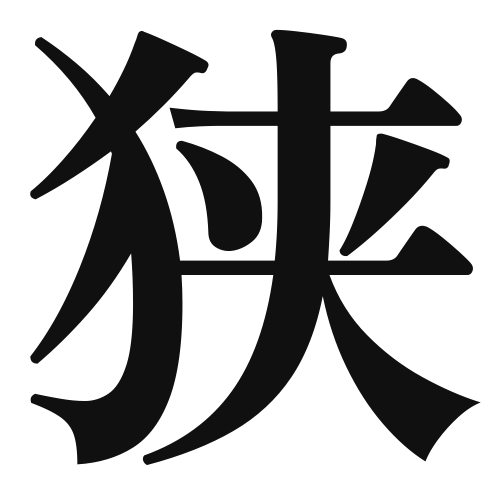1. Overview of Meaning
The kanji “狭” (read as “kyou” or “se”) means “narrow” or “small in width.” It is often used to describe spaces, areas, or even concepts that are limited or restricted.
2. Formation and Radical
Formation of the Kanji: The kanji “狭” is a phonetic-ideographic character (形声文字). It combines the radical for “dog” (犭) on the left, which is related to animals, and the phonetic component “夾” (which suggests the sound “kyou”). This combination conveys the idea of a narrow space associated with animals.
Radical: The radical of “狭” is 犭, which is often associated with animals or things related to them.
3. Examples of Usage
Common Words and Phrases:
- 狭い (narrow)
- 狭隘 (narrowness)
Example Sentences in Daily Conversation:
- この部屋は狭いですね。 (This room is narrow, isn’t it?)
- 道が狭くて通れません。 (The road is too narrow to pass through.)
4. Synonyms and Antonyms
Similar Kanji:
- 狭い (narrow) – Similar in meaning, but can also imply a lack of space.
- 小さい (small) – Refers to size but does not necessarily imply narrowness.
Antonyms:
- 広い (wide) – Meaning “wide” or “spacious,” which is the opposite of “狭.”
5. Cultural and Historical Background
Relation to Japanese Culture: The concept of “狭” is often reflected in traditional Japanese architecture, where spaces are designed to be compact yet functional, emphasizing efficiency and minimalism.
Proverbs and Idioms:
- 狭い世界 (narrow world) – Refers to a limited perspective or experience.
